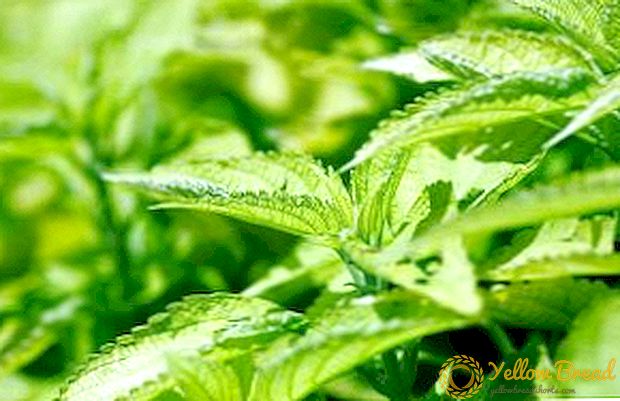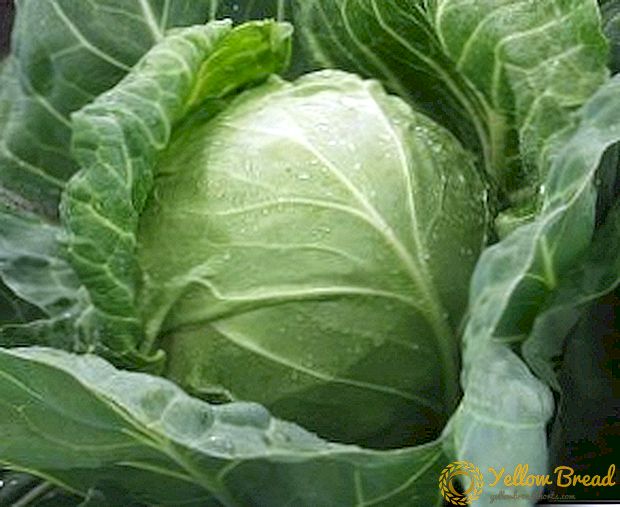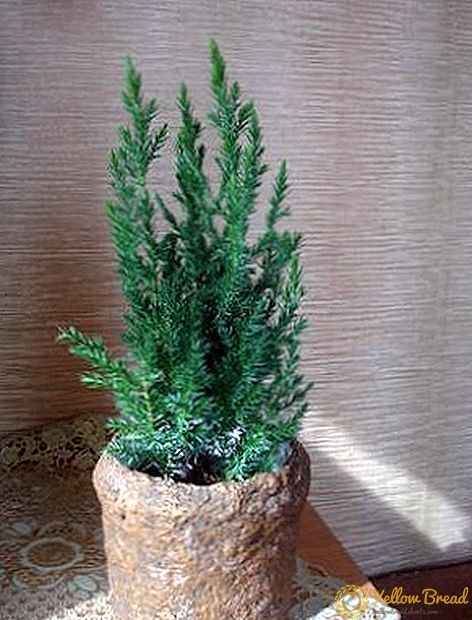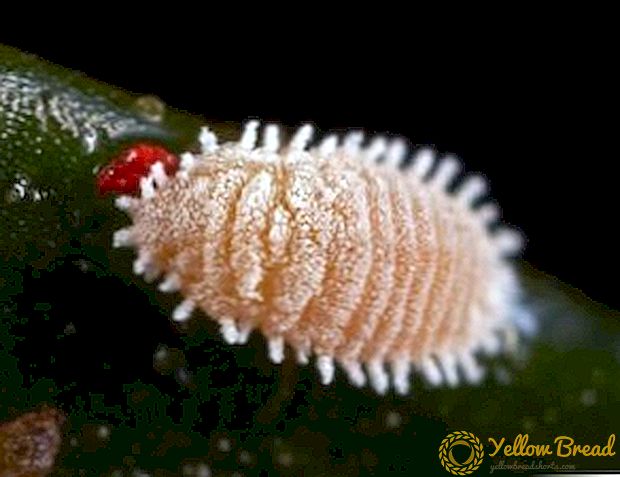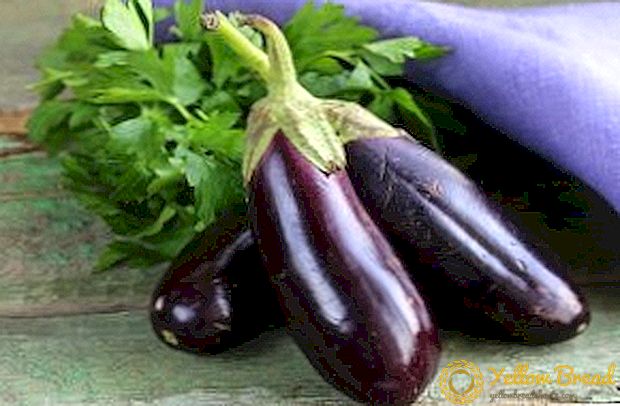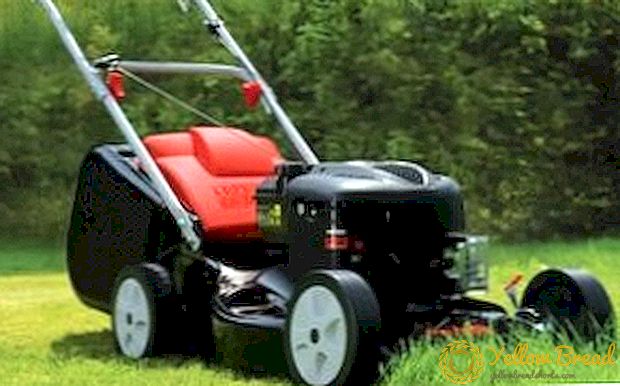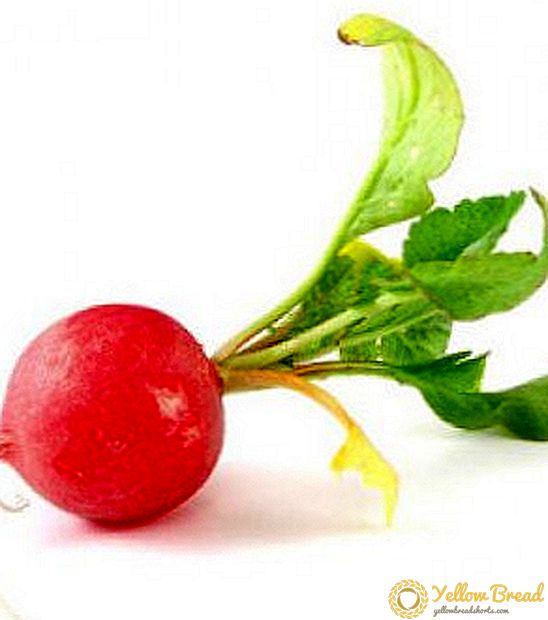 Many gardeners have radishes associated with the opening of the vegetable season, spring abundance and the first victories in the garden. After all, these root crops absolutely do not require special conditions and are so easy to maintain. But, unfortunately, very often they also become the first disappointments. Why the radish goes to the arrow, gives bitterness or hollowness, what mistakes vegetable growers make, what to do to save the crop - we'll tell about all this later in the article.
Many gardeners have radishes associated with the opening of the vegetable season, spring abundance and the first victories in the garden. After all, these root crops absolutely do not require special conditions and are so easy to maintain. But, unfortunately, very often they also become the first disappointments. Why the radish goes to the arrow, gives bitterness or hollowness, what mistakes vegetable growers make, what to do to save the crop - we'll tell about all this later in the article.
- Not coming up
- No root crop is formed
- Hollow Fruit
- Bitterness
- Bursts
- Leaves in the tops and blooms
Not coming up
The first problems in the cultivation of radishes begin a week after sowing the seeds, when shoots should already be, and they are not. This is due to violations of the rules of agrotechnical culture and poor quality seed.
 To ensure their viability, the seeds are pre-immersed in saline. Only settled samples are suitable for sowing.Experienced gardeners are advised to carry out pre-sowing soaking them in a growth stimulator ("Kornevin", "Ekosil").
To ensure their viability, the seeds are pre-immersed in saline. Only settled samples are suitable for sowing.Experienced gardeners are advised to carry out pre-sowing soaking them in a growth stimulator ("Kornevin", "Ekosil").The next most important nuance that has a direct impact on the friendly nature of the seedlings is the time of sowing and soil characteristics.
Radish - a specific plantwhich needs cool cloudy weather at 12-hour daylight hours for full growing season. Therefore, agronomists consider April and August the best period for sowing seeds. If you hurry, the cold ground will not allow the grain to germinate in time. It is advisable to prepare in advance a loose bed with a neutral or slightly acidic substrate. Bad seedlings are often found on infertile, weakened and too wet lands, as well as in areas with fresh manure.
In such cases, in order to obtain friendly shoots of radishes, it is recommended to gather hardwood instead of a dense garden soil mixture.  If planting takes place in the garden, be sure to loosen the planned plot.In the process of sowing, it is important to place the grains at the correct depth. It is equivalent to two diameters of planting material.
If planting takes place in the garden, be sure to loosen the planned plot.In the process of sowing, it is important to place the grains at the correct depth. It is equivalent to two diameters of planting material.
No root crop is formed
Why radishes do not form a root crop - a question that is very common among summer residents, most often occurs in conditions of sultry spring-summer period, strong winds, long light days and thickened crops.
 Also, do not bury the seeds very deeply.If the soil on the site is light, you can go down to 2.5 cm, but on heavy soils it is better to stop at 1.5 cm.
Also, do not bury the seeds very deeply.If the soil on the site is light, you can go down to 2.5 cm, but on heavy soils it is better to stop at 1.5 cm.Hollow Fruit
This problem is overly fertilized and dry beds. When sowing, it is important to consider the period of organic matter in the soil. For radish fresh manure in any quantities is undesirable.  Nitrogen will provoke an intensive buildup of tops, but there will be no root crops. The peculiarity of radish is that to the best of its growth it can not be fertilized at all. If you notice an active increase in biomass, correct the situation by introducing potassium or ash from dry oak.
Nitrogen will provoke an intensive buildup of tops, but there will be no root crops. The peculiarity of radish is that to the best of its growth it can not be fertilized at all. If you notice an active increase in biomass, correct the situation by introducing potassium or ash from dry oak.
With the development of the second leaf on the sprout, all moisturizing procedures must be strengthened, as well as during the period of active formation of the fruit ovary.
Bitterness
There are cases when very appetizing large vegetables grow, but they taste bitter. This is a consequence of the uneven moistening of crops. Often, gardeners pause in watering, while the root crop receives moisture for its development, but it is not enough to shape the taste.  Do not forget that the plant loves moisture. Ideally, the land should receive daily 10 liters of water per square meter of beds.
Do not forget that the plant loves moisture. Ideally, the land should receive daily 10 liters of water per square meter of beds.
Adjust the amount of watering depending on weather conditions. Experienced landowners advise to moisturize through a watering can and a strainer.
Bursts
When the radish is bitter, you already know what to do. Similar salvation for bursting fruit. Cracks - a clear sign of sudden changes in moisture in the garden.
Do not allow the ground to dry on the radish, it should always be moderately wet.Therefore, in advance, collect water in large containers and place it in a sunny place so that it warms up and settles.  In the evening, proceed to the gratification of the first vegetable of the season, because in its composition there are so many vitamins. In the heat of watering intensify, and in rainy wet weather, pause.
In the evening, proceed to the gratification of the first vegetable of the season, because in its composition there are so many vitamins. In the heat of watering intensify, and in rainy wet weather, pause.
Leaves in the tops and blooms
Why the radish goes into the tops and begins to bloom, gardeners who constantly loosen the soil in the rows, know the regular weeding and thinning of the crops. These are the reasons for cultural ripping.
Excessive anxiety provokes it to develop protective qualities, which is manifested in coarse fibers and bitter taste, as well as flowering.  To prevent this from happening, try to sow as soon as possible and disturb the seedlings only with watering. Do not forget about their regularity, because the release of arrows can cause a lack of moisture.
To prevent this from happening, try to sow as soon as possible and disturb the seedlings only with watering. Do not forget about their regularity, because the release of arrows can cause a lack of moisture.
Now you know what mistakes when growing radish deprive you of the harvest.
If you want your site to ripen juicy, whole and appetizing roots, responsibly treat the preparation of soil and seeds, carry out the correct sowing and take care of moistening the beds. And more radishes do not need anything.

